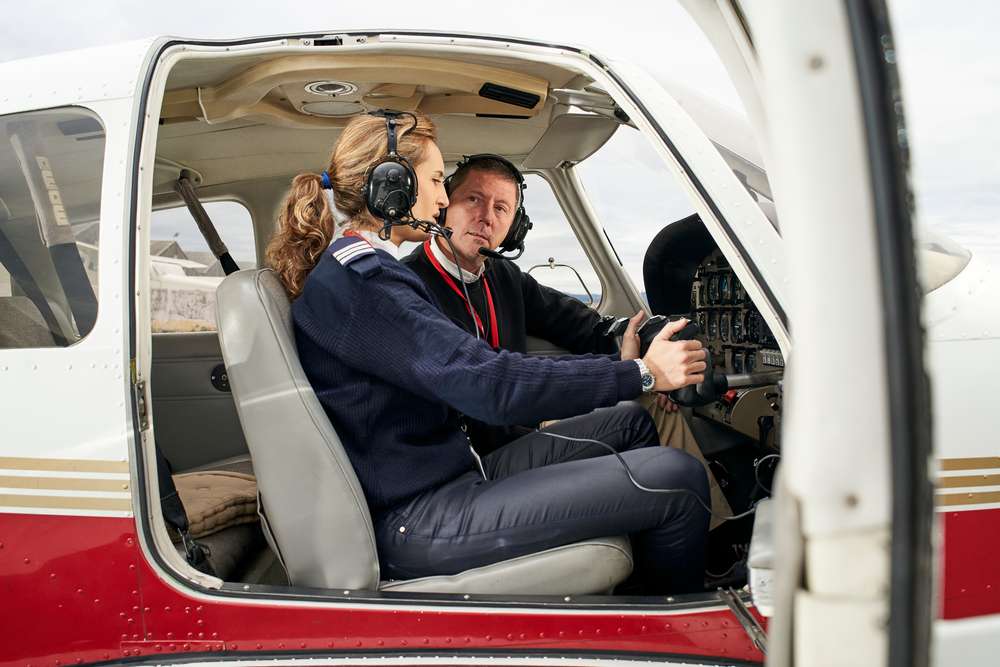Aviation Training: Launching Careers in the Sky
Aviation training is a crucial stepping stone for those aspiring to soar through the skies and build rewarding careers in the aerospace industry. This comprehensive educational process equips individuals with the knowledge, skills, and certifications necessary to operate aircraft safely and efficiently. From commercial pilots to aircraft maintenance technicians, aviation training opens doors to a wide array of exciting opportunities in the global aviation sector.

For aspiring pilots, flight training is a core component of their education. This involves accumulating flight hours under the supervision of certified instructors, progressing from basic maneuvers to more complex operations. Simulator training is also an integral part of the process, allowing students to practice emergency procedures and experience various flight scenarios in a controlled environment.
How long does aviation training typically take?
The duration of aviation training varies depending on the specific program and career path chosen. For those pursuing a commercial pilot license, the process can take anywhere from 18 months to three years of full-time study. This includes ground school, flight training, and accumulating the required flight hours.
Other aviation careers may have different timelines. For instance, air traffic controller training can take two to four years, while aircraft maintenance technician programs typically range from 18 to 24 months. It’s important to note that ongoing training and professional development are constants in the aviation industry, as regulations and technologies evolve.
What career opportunities are available after aviation training?
Completing aviation training opens up a diverse range of career opportunities. Some of the most popular paths include:
-
Commercial Pilot: Flying passengers or cargo for airlines or private companies.
-
Flight Instructor: Teaching aspiring pilots and helping them gain experience.
-
Air Traffic Controller: Managing aircraft movement on the ground and in the air.
-
Aircraft Maintenance Technician: Ensuring the safety and proper functioning of aircraft.
-
Aviation Manager: Overseeing operations at airports or for airlines.
-
Aerospace Engineer: Designing and developing aircraft and related systems.
These careers offer not only the excitement of working in a dynamic industry but also the potential for competitive salaries and opportunities for advancement.
What is the aviation training landscape like in Saudi Arabia?
Saudi Arabia has been making significant investments in its aviation sector as part of its Vision 2030 plan to diversify the economy. This has led to an increased focus on aviation training within the country. The Saudi Aviation Academy, established in partnership with CAE, is one of the leading institutions offering comprehensive pilot training programs.
The country is also home to several other aviation training centers, including those operated by Saudi Arabian Airlines and the King Abdulaziz City for Science and Technology. These institutions offer a range of programs, from pilot training to aircraft maintenance and aviation management courses.
Saudi Arabia’s strategic location and growing aviation industry make it an attractive destination for those seeking aviation training in the Middle East. The country’s commitment to developing its aerospace sector suggests that opportunities in this field will continue to expand in the coming years.
How can one choose the right aviation training program?
Selecting the right aviation training program is crucial for a successful career in the industry. Consider the following factors when making your decision:
-
Accreditation: Ensure the program is accredited by relevant aviation authorities.
-
Facilities and Equipment: Look for schools with modern aircraft and simulators.
-
Instructor Quality: Research the experience and qualifications of the teaching staff.
-
Career Support: Inquire about job placement assistance and industry connections.
-
Cost and Financial Aid: Compare program costs and available funding options.
-
Location: Consider whether you prefer to train locally or internationally.
It’s also beneficial to speak with current students or alumni to gain insights into the program’s quality and outcomes.
What are the costs associated with aviation training?
Aviation training can be a significant investment, with costs varying widely depending on the program and location. Here’s a general overview of training costs for different aviation careers:
| Career Path | Training Program | Estimated Cost Range |
|---|---|---|
| Commercial Pilot | Flight School (0 to Commercial) | $60,000 - $100,000 |
| Air Traffic Controller | Degree Program | $30,000 - $150,000 |
| Aircraft Maintenance Technician | Vocational Program | $20,000 - $50,000 |
| Aviation Manager | Bachelor’s Degree | $40,000 - $200,000 |
| Flight Dispatcher | Certification Course | $5,000 - $10,000 |
Prices, rates, or cost estimates mentioned in this article are based on the latest available information but may change over time. Independent research is advised before making financial decisions.
It’s important to note that these figures are estimates and can vary significantly based on factors such as location, program duration, and included resources. Many institutions offer financial aid options, scholarships, or payment plans to help offset the costs of training.
In conclusion, aviation training is a gateway to an exciting and dynamic career in the aerospace industry. Whether you’re dreaming of piloting commercial jets, managing air traffic, or maintaining aircraft, the right training program can set you on the path to success. With the growing demand for aviation professionals worldwide, including in Saudi Arabia, investing in quality aviation education can lead to rewarding opportunities in this global industry.






